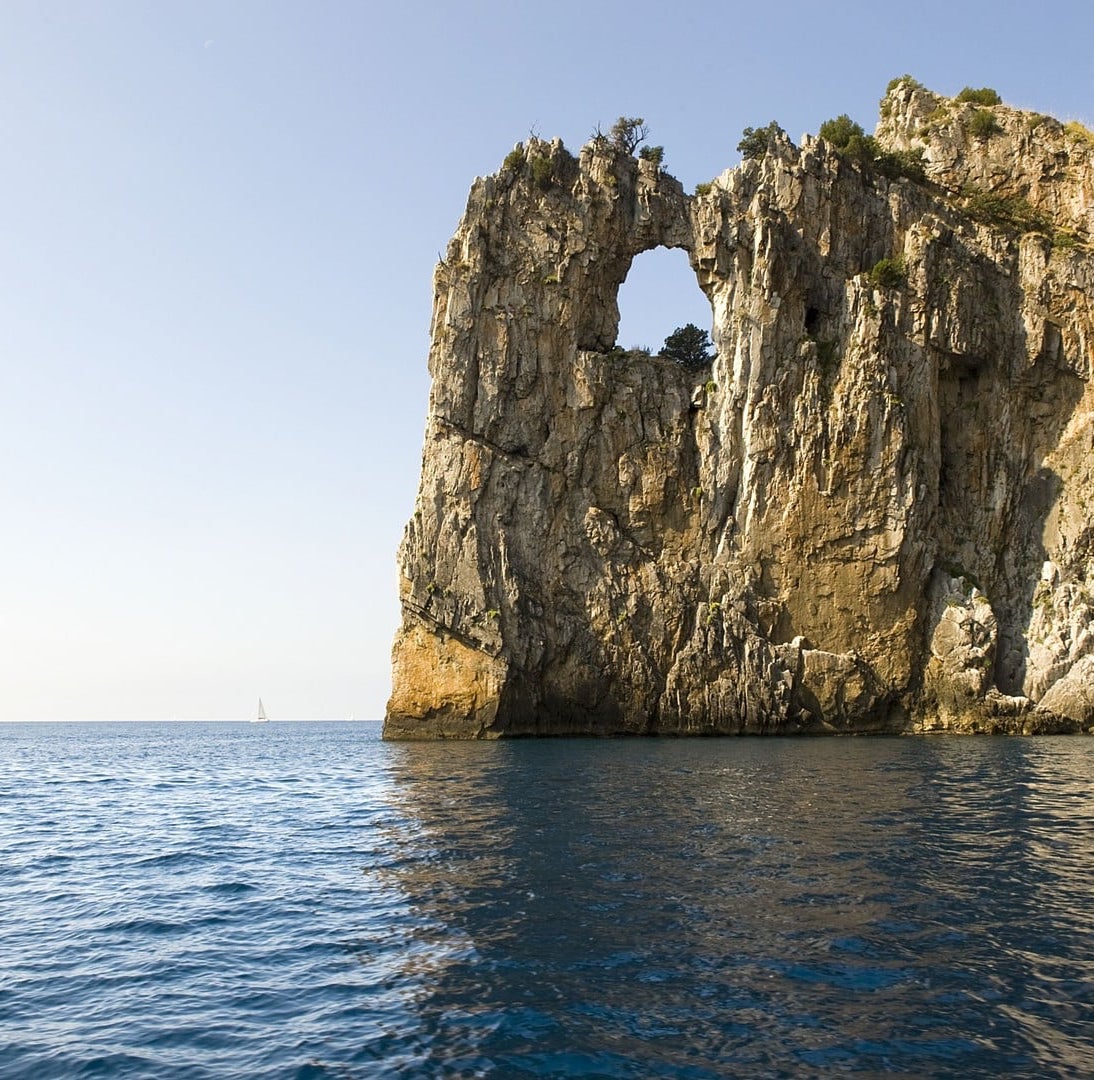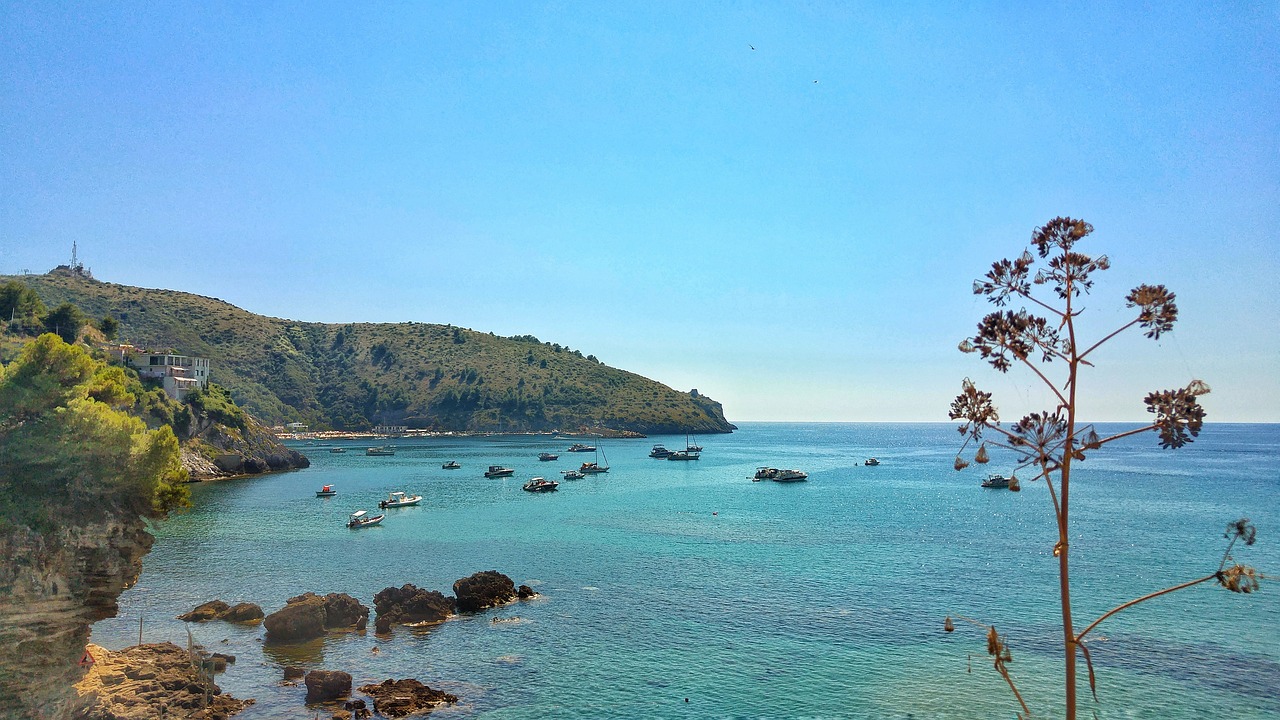Palinuro is a "little gem of the southern sea" surrounded by the turquoise waters of the sea and the green of the surrounding hills.
Palinuro has an ancient history that is lost in myth. In fact, the origin of the name derives from nothing less than the mythological helmsman who brought Aeneas to safety while fleeing from the city of Troy invaded by flames. The Aeneid, Virgil's wonderful masterpiece, will begin from this episode, bringing this strip of land on the border between Campania and Basilicata to legend.
If these places fascinate you, you can visit Montano Antilia with one of our tours:
⇒Trekking in Cilento: il Cammino di San Nilo
What to see in Palinuro
We have prepared a list of things to see in Palinuro, to admire the beauty of this suggestive fishing village in peace. Why not decide to spend a carefree day to discover the beauties of this fascinating center in lower Cilento?
- The natural arch of Palinuro
- Eighteenth-century fountain
- Church of Madonna di Loreto
 Natural Arch
Natural Arch
The Natural Arch of Palinuro has always been the symbol of this characteristic village overlooking the sea. This imposing and fascinating natural hole divides the small private beach from the beach equipped with a kiosk and mooring for boats. For this reason, in recent years, the arch has been subject to safety measures to ensure that it can be used again.
Eighteenth-century fountain
The Fountain of Palinuro, built in noble gold, is located in the center of Palinuro and in addition to representing a valuable example of rural architecture, it demonstrates how much the inhabitants of the village took care of their garden. The fountain is characterized by three petal-shaped extensions and retains a particular pastel-colored painting and a cavity from which water flows.
Church of the Madonna di Loreto
Until the 1950s, the small village of Palinuro had a small church with a single nave dedicated to the Madonna of Loreto, Patron Saint of the Parish. As the popularity of its enchanting beaches increased, the small parish also had to modernize itself. It was then decided to build a new church with modern architecture, octagonal in shape, a few meters away.
Only the bell tower remains of the old structure, which thus continues to observe the magnificent village from above.
What to do in Palinuro - the Slow Active Tours proposal
Once you have discovered the wonders hidden in the streets of Palinuro, the time has come to get to the heart of the sounds and smells of this ancient village. Due to its position between the hills and valleys of Lambro and Mingardo it represents the ideal base for various activities.
For this reason we have prepared a list of things to do in Palinuro that you absolutely cannot miss!
-
Boat tour among the caves
From Capo Palinuro you can enjoy a truly unique and timeless landscape. In fact, the Cilento coast is full of caves and submerged caves in which a myriad of reflections captivates the gaze of every visitor. The Blue Grotto is undoubtedly among the most evocative and unforgettable. Inside, a fascinating play of lights spreads in the dim light and bounces between the stalactites which amaze the observer. A natural and uncontaminated beauty that has always enchanted visitors of all ages. As in the case of Cala Bianca and Baia Infreschi, awarded by Legambiente as the most beautiful beaches in Italy in 2013 and 2014.
-
Palinuro Museum
Located in a fascinating prominent position, on the spectacular and romantic beach of Ficocella, the Antiquaria di Palinuro is a real window on the incredible history of the village. From the excavations carried out starting in 1948, traces of the existence of two fortifications placed to defend the town were immediately found. But the most sensational discoveries concern the excavations around the necropolis which have revealed precious locally produced ceramic artifacts with valuable geometric decorations.
-
San Severino di Centola. A Journey Time in the Medieval Village
On the road to reach Palinuro, it is impossible not to stop and admire the mysterious charm of San Severino, a true hidden gem in the heart of Cilento. This treasure chest of medieval art holds hidden treasures of considerable value within it. The Lupo Baronial Palace, built at the end of the 13th century, is an example of this. With its imposing façade it has always dominated the abandoned village, while the characteristic non-communicating floors contribute to creating that aura of mystery that envelops the entire town.
-
Visit to the Certosa di San Lorenzo
If, however, you want to spend an extra night in Palinuro, it is very interesting to visit the Certosa di San Lorenzo, a splendid example of religious architecture dating back to the 14th century. Inserted into the UNESCO World Heritage Site list in 1998, it is the largest monastic complex in southern Italy and certainly one of the most interesting in Europe.
A large rectangular courtyard around which most of the production activities were housed constitutes the external courtyard.
The elements typical of the sixteenth century, such as the imposing Doric columns made of local stone, were enriched in the Baroque era with statues and pinnacles.
The Library, which once housed hundreds of illuminated manuscripts, has nevertheless retained the charm of the time thanks to the majolica floor and the elegant and refined decorations of the ceiling.
The large cloister, which is spread over two levels, is considered among the largest in Europe. Construction began in 1583 by substantially redoing a pre-existing cloister. In the center there is a valuable cup-shaped fountain from 1640. -
Cammino di San Nilo
The exciting Cammino di San Nilo ends in the charming village of Palinuro . A route that we, at Slow Active Tours, propose to those who want to explore small villages surrounded by enchanting woods, villages on the slopes of mountains.
The route branches out in just over 100km and crosses Cilento, a strip of land surrounded by the fresh sea breeze of the Gulf of Policastro and the intense colors of the National Park.
Popular festivals and celebrations of Palinuro
Various moments dedicated to folklore are well rooted in this idyllic village. Undoubtedly the most eventful time of year is summer. One of the most anticipated events by residents is the Primula Festival which celebrates one of the symbols of the community. In fact, Primula palinuri Petagna is considered by scholars to be a very ancient species, and as often happens, it is at risk of extinction. For this reason since the 1990s it has been chosen as the symbol of the Cilento National Park. Along the Sentiero della Primula it is easy to find it in abundance thanks to its predilection for cliffs and rocks overlooking the sea.
The night of the myth takes place every year on August 23rd and recalls two episodes told in the pages of the ancient classics: the landing of Ulysses along the coasts of ancient Magna Graecia and the tragedy of Palinuro, the mythological helmsman of Aeneas, who after being having survived the drowning, he was mistaken for a sea monster by the inhabitants of this village and thrown back into the water.
The Patronal Festival of Palinuro takes place on 10 December, the day in which the Madonna of Loreto is celebrated and the whole village flocks to the central Virgilio sqaure and prepares for the celebrations of Holy Christmas.
Typical dishes of Palinuro
Palinuro's cuisine is characterised by authentic and decisive flavours. The typical dishes of Palinuro are undoubtedly based on fish. The Palinuro fisherman's recipe is very well known among the restaurants of the village . In fact, it is said that a local anchovy fisherman prepared breakfast for the next day in the evening before going to sleep. He cooked freshly caught anchovies, adding tufts of wild fennel picked along the way to the sea, and fresh spring onion taken from his own garden.
Very well known among the pizzerias of the historic centre is the Pizza dei Troiani, a historical recipe that has its roots in the mythological origins of the village. It is a particular mixture of corn flour and wheat flour. Gently cooked on round clay or tin plates. For the seasoning the choice is varied, you can add vegetables boiled with oil and lemon, aromatic herbs with oil, salt, chilli pepper and garlic; fresh ricotta, mature cheeses, caciotta or caciocavallo, salt, pepper, parsley and sage.
Eating and drinking in Palinuro
Here are some proposals from the area:
Il Vicoletto in Indipendenza street, 59. The restaurant has a large terrace overlooking the sea. The cuisine offers typical dishes of the Cilento and regional tradition, but also more innovative solutions.
Luna Rossa restaurant in Corso Carlo Pisacane, 82. Typical dishes based on fresh fish from the Cilento sea, supplied daily by local fishermen. Pizzeria with wood oven.
Ristopizzeria La Pergola in Corso Carlo Pisacane, 51. Locally farm-to-table fish dishes.
So what are you waiting for? Get your things ready and off you go!





